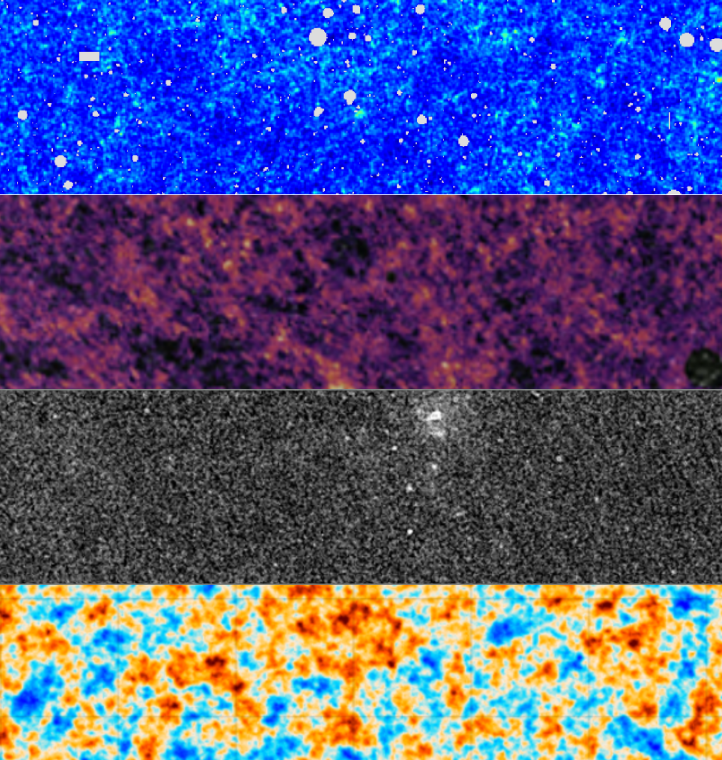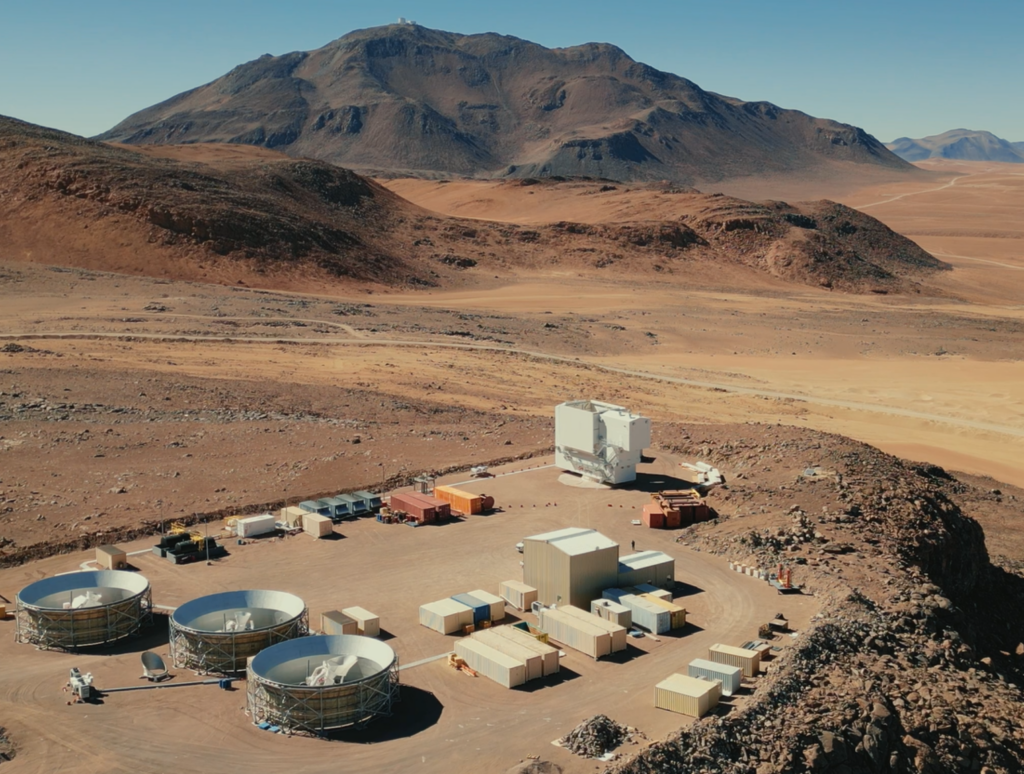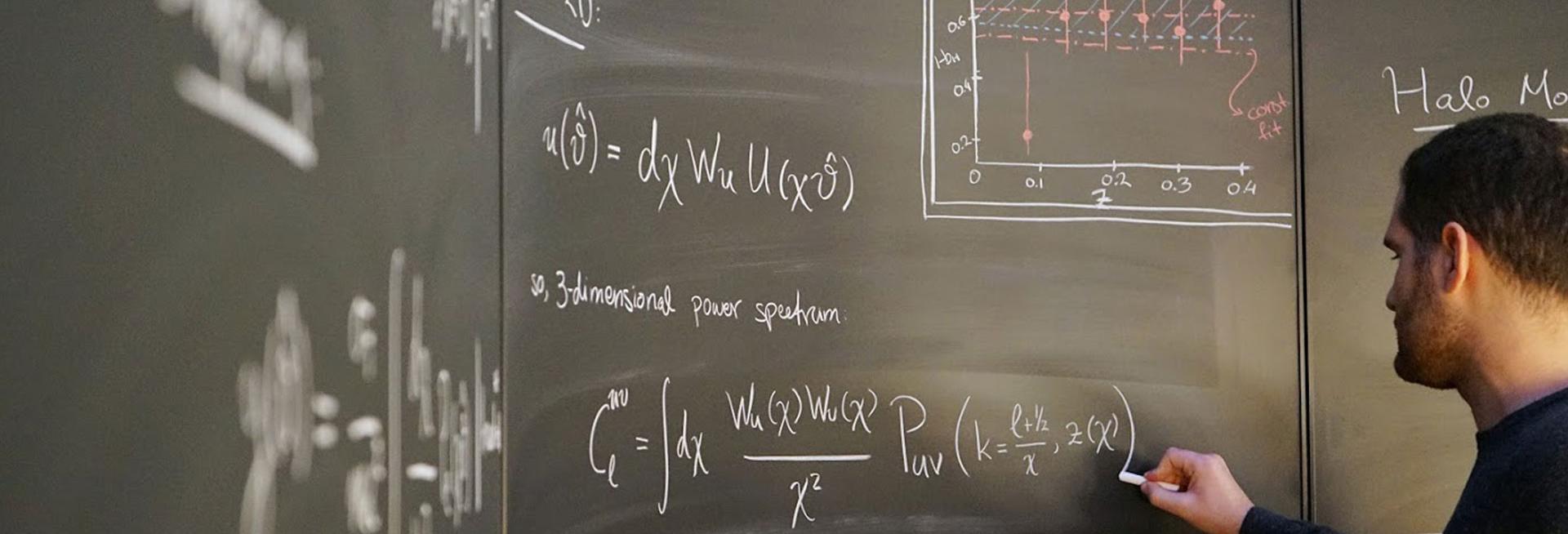Type Ia Supernova Cosmology with the Rubin Observatory’s Legacy Survey of Space and Time
Supervisors: Maria Vincenzi, Stephen Smartt
It is an exciting time for cosmology. In the past year, several independent studies—using diverse methods such as Type Ia supernovae (SNe Ia), baryonic acoustic oscillations, and the cosmic microwave background—seem to point to the same conclusion: the properties of Dark Energy are more complex than what we have previously thought.
Type Ia supernovae are among the most powerful tools in observational cosmology. The Vera C. Rubin Observatory’s Legacy Survey of Space and Time (LSST), beginning in January 2026, will transform this field. Within just a few months of operation, LSST will discover more SNe Ia than have ever been observed in total, revolutionizing both SN Ia cosmology and transient astronomy.
Our team is leading preparations for LSST’s first transient data release and will play a major role in its early analysis. We work on a broad range of projects (both observation-oriented and simulation-oriented) including the development and testing of transient discovery and classification pipelines, optimization of LSST spectroscopic follow-up strategies, and the design of new approaches to SN cosmology taking advantage of LSST large statistics.
In collaboration with other UK scientists, we are also leading the TiDES spectroscopic follow-up program, which will use the 4MOST spectrograph to follow up on tens of thousands of LSST transients and their host galaxies, providing crucial insights into their properties and redshifts.
The DPhil project will focus on preparing for future SN Ia cosmological analyses using LSST and TiDES data. In particular, it will aim to identify and mitigate key sources of systematic uncertainty—such as calibration, intrinsic supernova variability, and host galaxy correlations—that affect cosmological parameter inference. This work will directly contribute to refining the next generation of dark energy constraints from LSST.
What is the nature of dark energy?
Supervisors: Pedro Ferreira
One of the open question in cosmology is what is driving the accelerated expansion of the Universe? The current belief is that it is some form of energy which in invisible, i.e. it is dark. Recent observations seem to find that simplest proposal, the cosmological constant, doesn't quite explain what we see. On the other hand, the simplest explanations, such as quintessence, seem to not fare much better. The purpose of this project is to get a firm and complete understanding of what we can actually say about the nature of dark energy with current and future observational data. We will build on my recent work with William Wolf and Carlos Garcia Garcia, systematically exploring what microphysical models may be responsible for what we are seeing.
Cosmology and astrophysics from the Rubin and Simons observatories
Supervisors: David Alonso

Cosmology is entering an extremely exciting era: with the advent of so-called "Stage-IV" experiments, such as the Rubin Observatory and the Simons Observatory, now starting to take data, cosmology will soon be able to address key questions in fundamental physics. What is the physical origin of the Dark Energy fueling the current phase of accelerated expansion? What high-energy physics in the early Universe gave rise to the structure we observe around us today? What is the mass of neutrinos? However, ensuring that our answers to these questions are robust against uncertainties in our modelling of the complex astrophysical processes governing galaxy formation and evolution, is a highly challenging problem.
In this project, we will explore different avenues to tackle this problem. We will exploit the combination of traditional cosmological observables (e.g. the power spectrum) with novel data combinations probing complementary properties of the large-scale structure that should respond to the same physics. We will develop and test physics-based models against observations of multiple tracers of the matter inhomogeneities that are sensitive to different properties of the baryonic (warm and hot intergalactic gas) and dark matter components. We will exploit machine learning methods to improve the accuracy of these models, and to explore their large parameter spaces.
The student selected for this project will have access to the first data obtained by the Rubin Observatory (the most ambitious ground-based imaging survey, observing the shapes and positions of billions of galaxies across the southern hemisphere), and the Simons Observatory (the most sensitive experiment targeting the Cosmic Microwave Background -- CMB). These experiments will provide high-sensitivity observations of a wide range of cosmological and astrophysical tracers of the large-scale structure (e.g. weak gravitational lensing, the clustering of galaxies, the thermal and kinematic Sunyaev-Zel'dovich effects), and the student will be able to pursue a large variety of problems associated with their joint analysis, from the development and implementation of theoretical models, to the design and exploitation of new data analysis techniques and parameter inference methods.
Related work:
A Bayesian understanding of the radio Universe
Supervisor: Matt Jarvis
The last few years has seen a step change our capability for measuring the 21cm emission line of neutral hydrogen and the radio continuum emission from star-forming galaxies and AGN. This is a result of the new generation of sensitive radio telescopes, and in particular the MeerKAT telescope in South Africa.
This brings HI astronomy into the era of large statistical surveys, with data that can both detect large numbers but also have high enough resolution to study them in detail. In this project, the student will have the opportunity to lead the work on extracting the maximum amount of information from these new surveys in order to understand the role that pristine neutral gas plays in the evolution of galaxies, and trace how it may fall along the filamentary cosmic highways onto galaxies, thus replenishing their gas supply. The student will have the opportunity to use data from the MIGHTEE Survey (PI Jarvis) and the LADUMA survey, both using MeerKAT, and the DINGO survey using ASKAP, to carry out this research. They will combine this cutting-edge data with optical and near-infrared data from Rubin/LSST, Euclid and the 4MOST spectroscopic surveys to understand how the gas relates to the stars that are already in place and the environments in which they reside.
This is an ideal project for someone to get experience of large multi-wavelength surveys and develop statistical expertise to understand galaxies and the large-scale structure of the Universe, whilst working within a large, friendly and diverse group in Oxford.
References:
- Overview of the MIGHTEE survey https://arxiv.org/pdf/1709.01901
And the data https://arxiv.org/pdf/2409.17713 - Some of the science: https://arxiv.org/pdf/2506.11935
- And the technique: https://arxiv.org/pdf/1907.10404, https://arxiv.org/pdf/2012.09797
CMB B-mode Polarization: Commissioning and early observations with SO:UK
Supervisors: Angela Taylor, Mike Jones, Jamie Leech
The search for the signature of inflation in cosmic microwave background polarization measurements is ont of the most important topics in observational cosmology. The UK has joined the Simons Observatory (https://simonsobservatory.org), an international collaboration to detect the CMB B-mode polarization from a high-altitude site in Chile. We are building two Small-Aperture Telescopes (SATs) to join the three SATs already built in the US and operating on site, and one being built in Japan. There is also a Large-Aperture Telescope (LAT) to provide higher resolution data essential for removing the effects of gravitational lensing from the CMB. The UK SATs are planned to be deployed in late 2026 just as this DPhil project starts. We are looking for a DPhil student to take part in the deployment and commissioning of the UK SATs, travelling to the site and helping to develop the calibration and data verification procedures, and then taking part in the operations and data analysis. Oxford already has a significant effort in analysing data from the existing SO telescopes, and we are designing and building the data readout system for the UK telescopes, so we have a unique perspective on the data flow from raw detectors to final science results. The student will be joining a large and well-organised international collaboration, but will have the opportunity to make significant individual contributions to this major project.

Unveiling the nature of dark matter with Euclid, Rubin and MeerKAT
Supervisors: Matt Jarvis, Tariq Yassin, Harry Desmond (Portsmouth)
Most of the matter in the universe is a mysterious substance called dark matter. Two of the main ways to learn about dark matter are galaxy dynamics, the motions of the stars and gas in galaxies, and weak lensing, the bending of light by mass. In this project we will test the nature of dark matter by constructing cutting edge methods to constrain the dark matter distribution around galaxies and applying them to the exciting new datasets arriving over the course of the PhD from the Euclid and SKA observatories.
We will begin by creating a framework that combines lensing and kinematic information to map how visible matter relates to the underlying dark matter density field, and to quantify whether there are systematic patterns in this connection — in particular, how strongly the distribution of visible matter can predict the distribution of dark matter. Previous studies have found evidence for a surprisingly tight relationship between these components called the radial acceleration relation (e.g. [1], [2]), but its physical origin and universality remain poorly understood. Investigating this connection in detail will provide a powerful test of models of galaxy formation and of the fundamental properties of dark matter. Building on this, we will develop Bayesian forward models [3] to assess how well current theoretical frameworks reproduce the observed trends, and to identify whether additional physical ingredients or alternative dark matter scenarios are needed to explain them.
Having learnt the correlations between dark matter and galaxy properties, we will then develop novel causal discovery methods (hitherto barely applied in astrophysics and cosmology) to uncover the causal structure of their interrelation. Whereas traditional analyses rely on statistical associations, causal discovery algorithms can determine which variables directly influence others, the direction of those influences, and whether latent confounders are required to explain the observed dependencies [4]. This will provide additional, previously untapped constraining power into the physical mechanisms at play.
References:
- [1] A. Vărăşteanu, M. Jarvis et. al “MIGHTEE-HI: the radial acceleration relation with resolved stellar mass measurements”, MNRAS 541, 2366 (2025)
- [2] T. Mistele et al, “Radial acceleration relation of galaxies with joint kinematic and weak-lensing data”, JCAP 04 020 (2024)
- [3] Trotta, Robert, “Bayes in the Sky”, Contemporary Physics 49(2), 71-104 (2008)
- [4] H. Desmond & J. Ramsey, “The causal structure of galactic astrophysics”, MNRAS submitted (arXiv:2510.01112)

